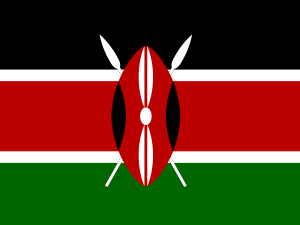 Kenya
Kenya
Differentiated Service Delivery in Kenya
Facility-Level
Coverage
%
Source: 2022 CQUIN DART CMM self-staging results
% In Less-Intensive
Differentiated Treatment Models
%
Multi-month ART Dispensing
%
DART Model
Diversity
Source: 2022 CQUIN DART CMM self-staging results
Differentiated Service Delivery in Kenya
Kenya joined the CQUIN learning network in 2016, bringing with it an existing national policy on differentiated service delivery (DSD) and a technical working group tasked with providing input and guidance on DSD implementation. Currently, Kenya’s Ministry of Health and the National AIDS and STI Control Program (NASCOP) provide guidance on DSD implementation and work toward improving and expanding upon existing DSD models to present recipients of care with more options.
Recipients of care have played an integral role in the scale-up, implementation, and prioritization of DSD in Kenya. Community members actively participate in policy revisions and the development of new guidelines. One such policy propelled by the RoC community called for the provision of a basic health education curriculum to everyone receiving ART, creating more informed and empowered DSD mechanisms.
Currently, Kenya offers five different models of ART service delivery, including four less-intensive DSD models and the more-intensive conventional model known as “Standard Track.” All four less-intensive models include three-month multi-month scripting for ART refills, allowing recipients of care to pick up medication in bulk and minimize clinic visits. The less-intensive differentiated models include:
- Two facility-based models: fast track; family-centered model of care delivery within a family unit.
- Two community-based models: peer-led community-based ART distribution; and health care worker-led community-based ART distribution.
According to July 2019 data from the national health information system and the data warehouse, NASCOP estimates that 88 percent of people on ART are enrolled in a less-intensive DSD model versus 12 percent who continue to receive services in the more-intensive Standard Track model.
One major barrier to DSD implementation in Kenya is the lack of an effective monitoring and evaluation (M&E) system. According to NASCOP and its partners, there are persistent challenges in M&E of DSD, such as incompleteness of reports, varied understanding of DSD indicators, and a lack of effective M&E tools. Therefore, Kenya is intensifying its focus on M&E and quality, efforts supported by CQUIN.
In June 2018, a team from Kenya visited Uganda on a south-to-south learning exchange, where they observed the linkage of The AIDS Support Organisation’s (TASO) community M&E system with Uganda’s national DSD M&E system, learning how these resources could be adapted to fit Kenya’s context. Additionally, in June 2019, CQUIN’s Quality Improvement workshop was held in Nairobi, Kenya, convening 165 experts in-country to share knowledge and develop resources to strengthen quality improvement in DSD implementation.
Resources
Taking Differentiated Service Delivery to Scale in Kenya
 Loading...
Loading...

Visit ICAP's Website for a broader portfolio of work in CQUIN network countries.
